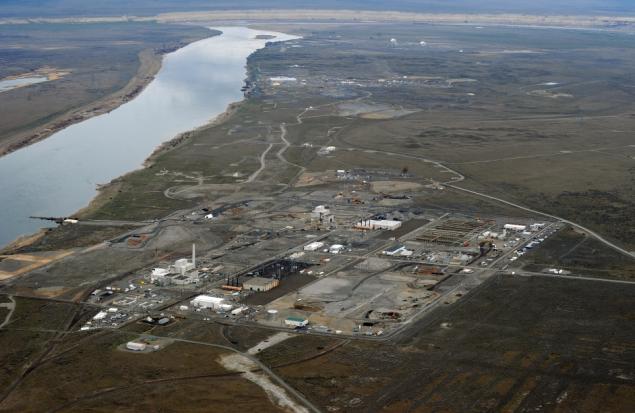Part One of Two Parts.
Yesterday, I posted comments on a list of problems with nuclear power. Today I am going to comment on another list of "dangerous nuclear misconception." This list was published on the listverse.com website.
1) The Fukushima disaster is under control. There is a lot of confusion about the current status of the efforts to clean up after the March 2011 meltdowns at the Fukushima nuclear plant in Japan. While the Fukushima aftermath has largely faded from the headlines, stories keep appearing cataloging continuing problems and failures on the part of TEPCO to solve problems such as contaminated water leaking from a huge farm of tanks. They still don't even know exactly where the melted reactor cores are and, even if they did, they have no way of dealing with them. If the cores melt through to the groundwater beneath the plant, there could be radioactive steam explosions that would spread contamination over the countryside. The ruins of the reactors are highly radioactive making cleanup difficult if not impossible. It is estimated that it will require fifty billion dollars and several years to complete the cleanup. I think that this is a very optimistic estimate.
2) There is a great danger that aggressive and/or unstable countries will secretly develop their own domestic nuclear industries and proceed to create nuclear arsenals. It is very difficult and expensive for a country to create an domestic nuclear industry with reactor construction, uranium processing, plutonium recovery and nuclear weapons development. Unless a country has its own uranium mines, international purchases of uranium are closely monitored and expensive. The technological infrastructure needed to refine uranium and recover plutonium is complex, expensive and requires skilled scientists. These capabilities and staffing would be impossible to obtain without other countries being aware of attempts and preventing acquisition of needed hardware such as centrifuges. Nuclear weapons development ultimately requires testing which would be impossible to conceal.
3) Nuclear waste is being safely stored. There are many legal nuclear waste facilities around the world which are leaking radioactive materials. There are also many illegal dumps of nuclear waste that are leaking into the environment. There has been a lot of talk about creating permanent geological nuclear waste storage facilities but so far, only a few have been created. Germany closed such a facility because it was leaking into the groundwater. The U.S. was going to build a facility at Yucca Mountain but analyses of the site revealed that the original assessments of the site failed to account for groundwater movement. The U.S. did build a geological repository in New Mexico for waste from nuclear weapons development which was shut down recently because a waste drum exploded and radioactive materials were spread over twenty miles from the site. The Hanford Nuclear Reservation in Washington State is leaking a witches brew of radioactive and toxic chemicals from hundreds of deteriorating underground storage tanks.
4) There are many potential sites for additional nuclear waste disposal. Worldwide, there is a rejection of government attempts to find new places to store nuclear waste. Japan has changed a policy of allowing local governments to volunteer for waste siting to one where the government will select the site. States in the U.S. have passed laws to prevent the storage of high level wastes inside their borders. Other nations have faced fierce public backlash when considering sites for nuclear waste disposal. There is underground traffic all over the world where criminal enterprises are being paid to illegally dump nuclear waste because of a lack of legal facilities.
5) We always know if people are injured by radioactive contamination. Radiation is odorless, tasteless, and colorless. There is background radiation from natural uranium in varying amounts everywhere. Radon gas is produced from natural radium and can collect in basements of homes and buildings. There are spikes in radioactive steam and gas released from nuclear power plants during normal operations. Biological damage from these different sources radiation can take years or even decades to show up in the form of cancers and other diseases. It is estimated that tens of thousands of people die in the U.S. each year from radioactive poisoning from natural or man-made sources.
(See Part Two)
Hanford Nuclear Reservation in Washington State:
